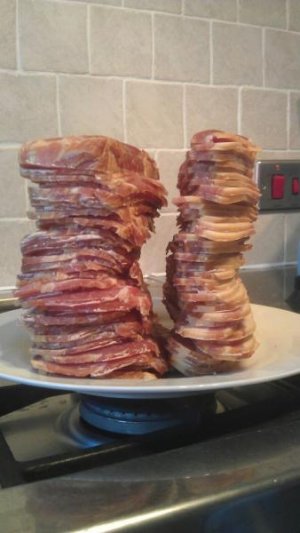MStoney72
Full Fledged Farker
To the Brethren who have had their hand at curing homemade bacon, I am just wondering if 7 days would be enough cure time? I used Morton tender quick and tomorrow will be the 7th day, and its gonna be up in the 30' temps tomorrow and it would be great if it was ready. I don't have a problem waiting till next week if needed. Thanks for reading and any insight is greatly appreciated.
Sent from my PC36100 using Tapatalk 2
Sent from my PC36100 using Tapatalk 2



